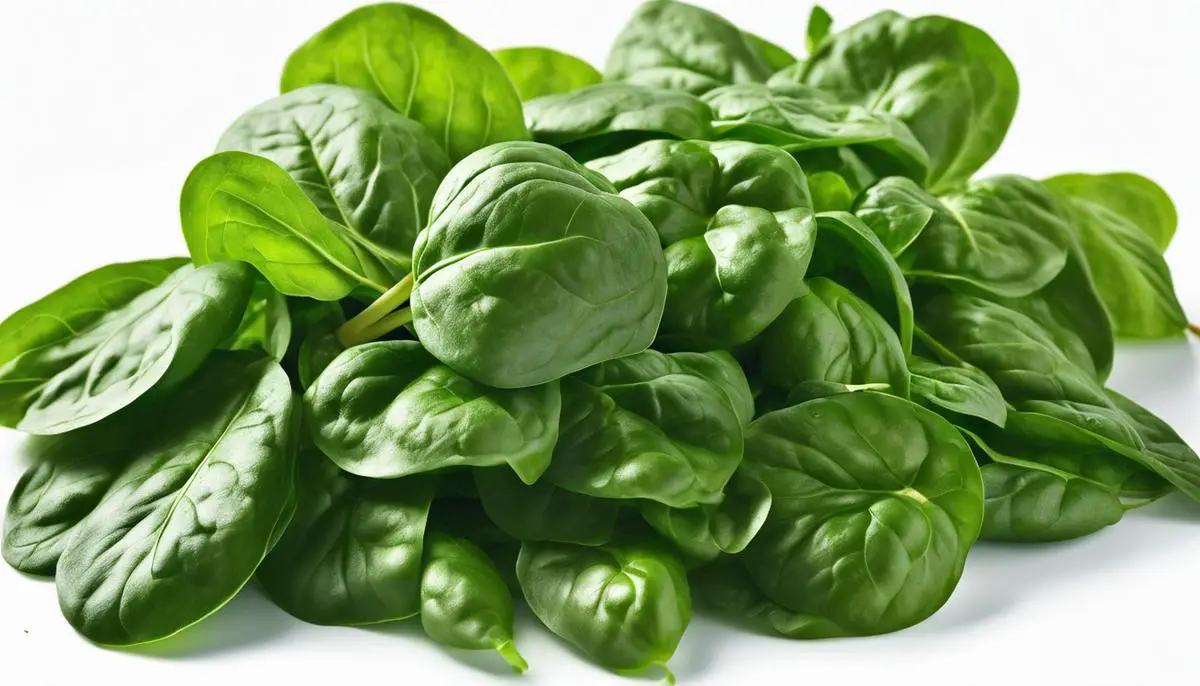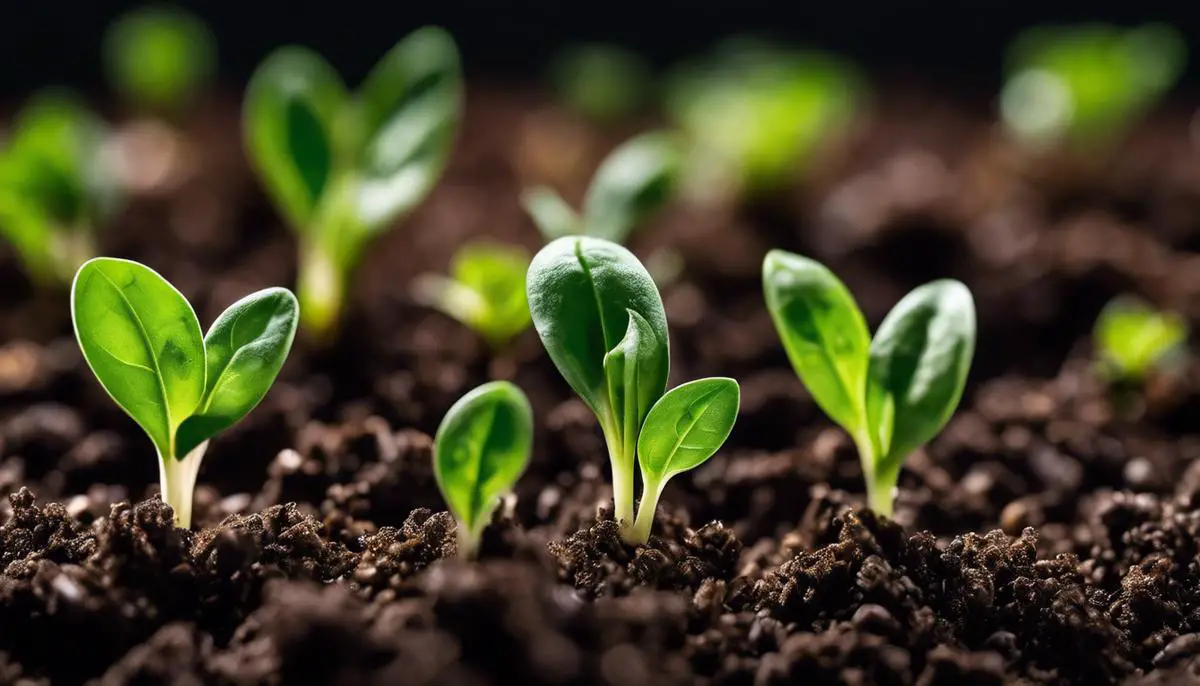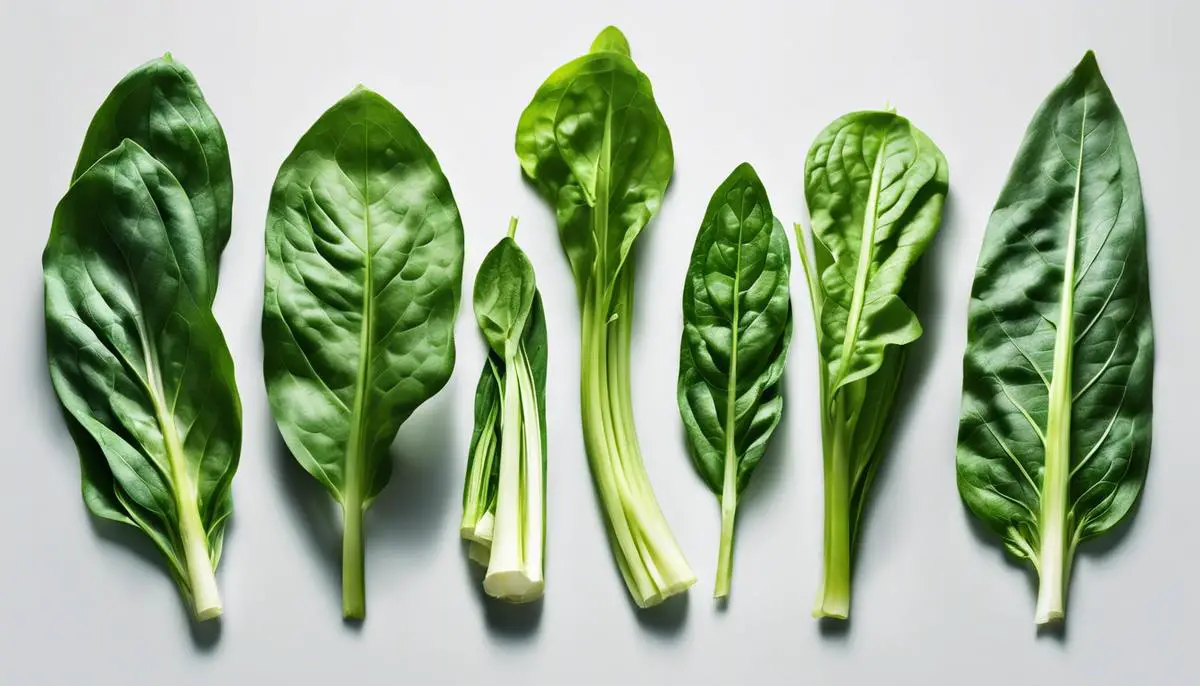Spinach is a nutritious green leafy vegetable that is enriched with essential nutrients, making it a favorite choice for many gardeners. While it seems like an ordinary vegetable, there’s more to it than meets the eye. This guide shines a light on the complexities and importance of understanding different spinach seed varieties, their unique characteristics, and how these factors can impact plant development and yield. Furthermore, it steps into the practical arena, offering insights into optimal seed starting techniques specifically designed for spinach, such as selecting the right soil mix, determining the perfect planting depth, and adhering to recommended seed spacing. Finally, it delves into the post-sowing period, discussing how to care for tender spinach seedlings and the transplanting practices that can drive strong growth when moving them outdoors.
Understanding Spinach Seed Varieties
The Spinach Savvy Gardener: Exploring the Multifarious World of Spinach Varieties
Green-thumb enthusiasts, rejoice! The world of spinach offers an exciting journey through diverse varieties, each with their unique characteristics that influence growth patterns in fascinating ways. Proper understanding of these varieties is key to harnessing the full potential of your home garden. In the verdant universe of spinach seeds, there are mainly three types that create a world of difference in your crumbly soil—Savoy, Semi-Savoy, and Smooth-Leaf. Unravelling their distinct profiles will surely elevate your future harvests.
Reader Poll: What online courses would interest you?
Savoy Spinach: The Curly Star of the Show
Perhaps the most recognizable variety, Savoy spinach typically has dark green, curly leaves that enjoy cool weather. Regarded for their rich flavor, these hardy seeds often feature a slightly slower growth rate, but they compensate for it with a hearty yield. Bloomsdale is a popular Savoy variety that is tolerant to mildew and bolting. It typically grows well in early spring and fall, making it an ideal choice for gardens with those tricky seasonal shifts.
Semi-Savoy Spinach: The Middle Ground Marvel
Subscribe to our newsletter!
Semi-Savoy spinach strikes a delightful balance between its Savoy and Smooth-Leaf counterparts. This variety offers slightly crinkled leaves and a growth rate that typically outpaces the Savoy. Some gardeners prefer these seeds for their easy-to-clean leaves that are less prone to capturing soil and debris. One popular type is Tyee, which exhibits exceptional resistance to bolting, encouraging a longer harvest period.
Smooth-Leaf Spinach: The Salad-friendly Speedster
Smooth-Leaf spinach seeds, as the name suggests, produce flat, smooth leaves that make them preferred choices for salads, sandwiches, and stir-fries. Easier to clean than the Savoy varieties, these seeds germinate impressively quickly and are incredibly resistant to bolting. The Space variety is highly recommended due to its rapid and reliable growth, making it an excellent option for spinach enthusiasts seeking a quicker yield.
The journey of cultivating spinach from a humble seed to a vibrant, leafy plant is enthralling. The variety chosen can significantly affect the growth rate, taste, and overall yield. It’s fascinating how these distinctions, subtle though they may seem, can immensely impact the gardening experience. And remember, understanding your spinach not only maximizes your yield, but it also nurtures a farmer’s most critical asset—an intimate bond with the soil. So, wear your gardening gloves, breathe in that earthy aroma, and sow your favorite variety! With a bit of diligent care, you’ll soon witness a mini spinach forest unfolding in your backyard, waiting to be tossed into a tantalizing salad bowl. Happy gardening!

Seed Starting Techniques
The Spinach Seed’s Journey: Sowing, Growing, and Reaping the Good Greens
Kick-starting the process of growing spinach right from seeds is a highly rewarding endeavor that garners myriad benefits. There’s an indescribable satisfaction that comes with watching tiny green sprouts popping up neatly in rows, ready to be nurtured into healthy, mature plants, full of delectable leaves for salads, sautés, and side dishes. If you’ve ever wondered, “What is the best way to start spinach seeds indoors?,” let’s dig into the details without further ado.
To start, gathering the right supplies is key. You’ll need a seed tray or small pots, a good quality potting mix designed for seed starting, and of course, your chosen variety of spinach seeds. Since we’ve already discussed the specifics of the various types of spinach and their unique characteristics, it’s implied that your choice has been made with careful consideration and research.
Next, let’s get down to the fun part – planting. Fill your containers with the prepared soil but be careful not to compact it too much. Space is essential when it comes to cultivating hearty produce, and compacted soil restricts root growth. Scatter the spinach seeds lightly across the surface of the soil, aiming for around an inch apart. Cover them up with a thin layer of soil, around half an inch should do the trick. Water the area gently but thoroughly, ensuring the soil is moist but not sopping wet.
When it comes to keeping the environment conducive for germination, consistency is key. Spinach seeds require cool soil temperatures for optimal growth, ideally between 50-75°F. Sudden spikes in temperature could hinder the germination process. It’s generally recommended to place the planted seeds in a semi-shaded area indoors. Consistent moisture is also a paramount factor. Don’t let the soil dry out completely – misting is a great way to consistently keep the soil damp without overwatering.
Germination usually begins within a week or two. Tiny green shoots will pop up from the soil, and these are the first spinach seedlings. They can be a little delicate at this stage, so ensure to handle them gently, continue watering periodically, and remove any unhealthy looking seedlings to prevent the spread of diseases.
Transplanting can usually be done about three weeks after sowing when the seedlings have at least 2-3 true leaves. The final pots or grow bags should have adequate space for the plants to spread out, with around 3-4 inches between each plant being ideal.
As the spinach plants continue their growth journey, they need ample sunlight, preferably 3-4 hours each day. Water regularly but keep an eye out for signs of over-watering, such as yellow leaves. Within 5-6 weeks from sowing, the plants should be ready for harvesting.
Finally, remember that garden wisdom doesn’t dawn overnight. Each round of planting introduces new insights and fresh challenges. So, whether you’re a newbie gardener charting your initial foray in the green domain or a seasoned gardener deepening your roots in soil camaraderie, the journey of growing spinach from seeds is a splendid blend of care, patience, and anticipation.

Seedling Care and Transplanting
Having seen spectacular success with a host of spinach varieties, it’s undoubtedly the time to move deeper into the cultivating process. This next segment is going to address the spinach seedling care, best practices, and the right time for transplanting these little green powerhouses to the outdoors. Let’s dig in!
As soon as spinach seeds start transforming into fragile seedlings, it’s crucial to offer them the most comfortable environment. It is important to remember that these tender little plants are vulnerably beautiful, and whether it’s Tyee, Bloomsdale, or Space variety, it all comes down to the proper seedling care.
Generally, spinach seedlings are incredibly easy to maintain; they don’t need too much pampering, just regular attention. Keeping the soil consistently moist but not soggy is necessary, as overwatering can invite plant diseases. Light watering once every few days works best, utilizing a gentle mist setting on the watering can or hose to ensure no drowning. A bit of light is good too, placing them in a sunny windowsill for early photosynthesis stimulation can enhance the overall growth.
Next, we journey into the more intricate part – transplanting the seedlings outdoors. It’s advisable to harden the seedlings off before the big move, meaning you gradually introduce them to the outdoor environment. This process reduces transplant shock and helps them grow reliably.
Generally, spinach adores cool climates, so the best time to transplant spinach would be in early spring and late summer. In these periods, the plant can complete its life cycle before experiencing extreme climates. Although spinach seedlings are frost-tolerant, an unexpected late winter blast can devastate the crop. For autumn harvest, late August transplantation provides the spinach with ample time to mature before the first frost.
When transplanting, place spinach seedlings 3 inches apart in the soil, enough to support root development and leaf expansion as they grow to maturity. The soil should be loamy, rich in organic matter, well-draining, and have a slightly acidic to neutral pH range.
As the little seedlings grow into mature spinach plants, they will need regular watering, plenty of sunlight (but with some shade in the hotter parts), and thinning to avoid overcrowded growth. The plants generally benefit from a couple of organic feedings during their peak growth stages.
When the right care is met, these spinach seedlings will turn into beautiful plants, ready for harvest when leaves are big enough to eat, typically six weeks after transplanting. But remember, gardening is all about ongoing learning and adapting to new challenges. Keep observing, keep learning, and keep enjoying the journey. Happy gardening!

Whether you are making a first attempt at cultivating spinach or you are an experienced gardener looking to better understand and master this nutrient-packed vegetable, this guide serves as a comprehensive resource. With an in-depth coverage of diverse spinach seed variants, practical planting methods, and comprehensive seedling care and transplanting strategies, any reader is poised to maximize their spinach planting and yield. The knowledge presented here means you’re not only growing spinach, but you’re cultivating a healthier lifestyle with each green leaf you harvest. Use this information as a foundation to explore, experiment with, and ultimately enjoy the rewarding process of raising spinach – from seed to table.

